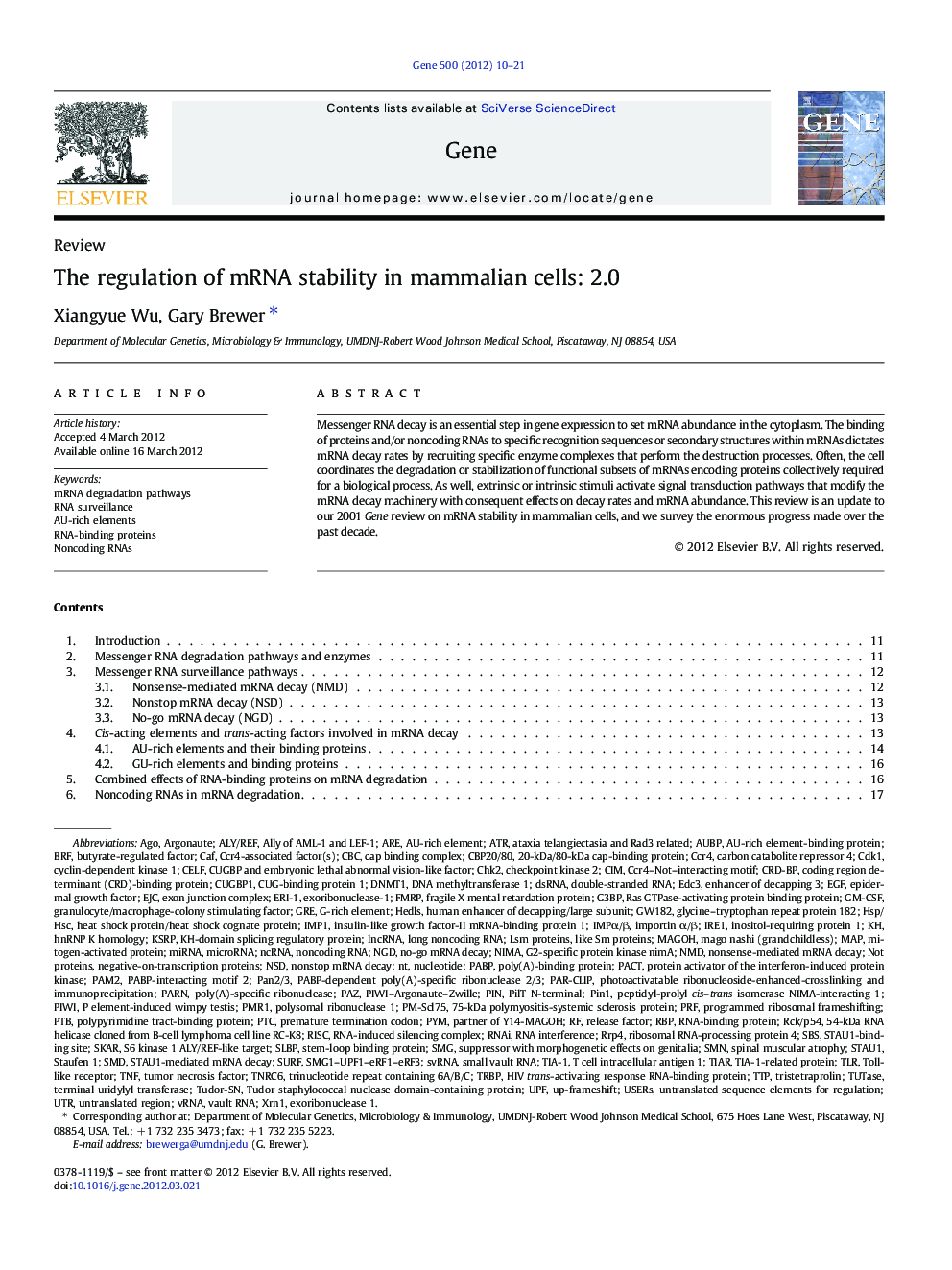| Article ID | Journal | Published Year | Pages | File Type |
|---|---|---|---|---|
| 2817918 | Gene | 2012 | 12 Pages |
Messenger RNA decay is an essential step in gene expression to set mRNA abundance in the cytoplasm. The binding of proteins and/or noncoding RNAs to specific recognition sequences or secondary structures within mRNAs dictates mRNA decay rates by recruiting specific enzyme complexes that perform the destruction processes. Often, the cell coordinates the degradation or stabilization of functional subsets of mRNAs encoding proteins collectively required for a biological process. As well, extrinsic or intrinsic stimuli activate signal transduction pathways that modify the mRNA decay machinery with consequent effects on decay rates and mRNA abundance. This review is an update to our 2001 Gene review on mRNA stability in mammalian cells, and we survey the enormous progress made over the past decade.
►Ribonucleases orchestrate mRNA degradation via defined pathways. ►Messenger RNA surveillance pathways ensure protein coding fidelity. ►Cis-acting elements and trans-acting factors dictate mRNA decay rates. ►RNA-binding proteins act in concert to control mRNA degradation rates. ►Noncoding RNAs are revolutionizing mRNA degradation paradigms.
